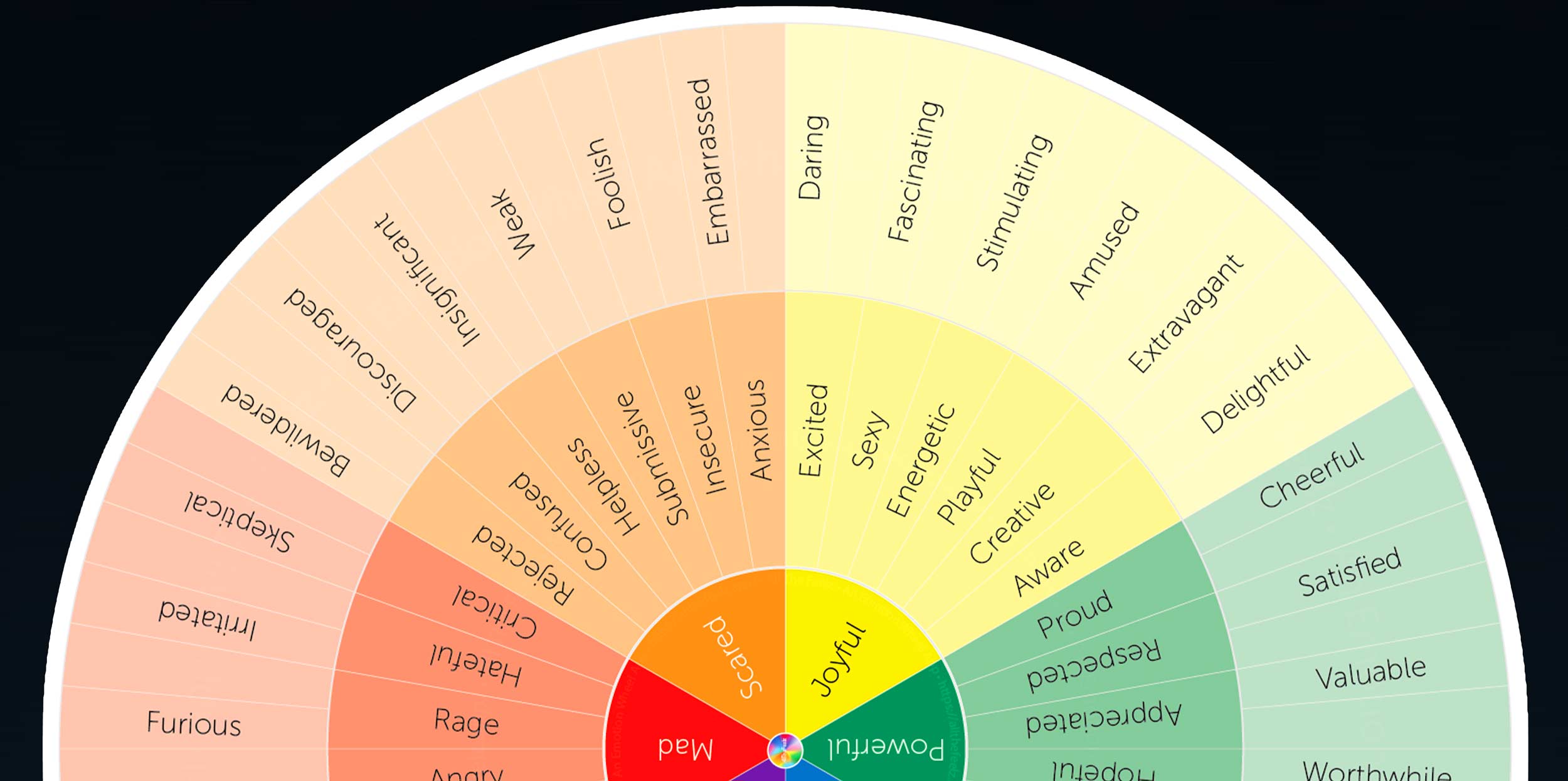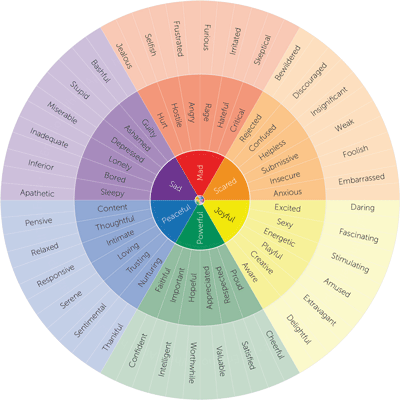
The Feeling Wheel
Designed by Gloria Willcox, the feeling wheel is a proven visual aid that helps people recognize, talk about, and change their feelings.
Try our feeling wheel app
Background story
Inspired by Joseph Zinker's ideas of conceiving the therapist as an artist (Zinker, 1978), and Robert Plutchik's comparison of emotions to colors (Plutchik's 1980), Wilcox set out to design the feelings wheel using the four basic emotions: scared, sad, mad and glad. To keep things balance between comfortable and uncomfortable emotions, she expanded "glad" into three emotions: joyful, powerful, and peaceful.
Armed with this balanced cohort, she matched them to the primary and secondary colors to render the inner wheel of fundamental emotions, from which the outer circles would radiate. Eluding to the blending nature of emotions, she painted these external sectors in decreasing shades of their corresponding inner feeling.
In her experience as a psychotherapist, she found that people seemed to find themselves at a loss for words when describing how they feel, usually handicapped in their ability to verbalize their emotions by learned behaviors of what is and not acceptable, when it comes to sharing feelings.
The Feeling Wheel is the precursor data model for the emotion wheel we use in our self-assessment app.
Anatomy of the feeling wheel
The feeling wheel is composed of an inner circle with six segments corresponding to six primary feelings: mad, sad, scared, joyful, powerful, and peaceful. It has two outer concentric circles describing secondary feelings that relate to the primary ones, painted in lighter shades than their counterparts.
Recommended Uses
Here are some suggested use according to Willcox:
- Leverage the blank spaces provided in the outer circle to add your own feeling words.
- Use it in a small group setting to facilitate creative play.
- Color the wheel using colors representing how you feel like a playful way to reveal your needs to the group.
- Change unwanted feelings into desirable ones by becoming aware of the bridges between them.
Final Thoughts
The exploration of emotions is a vehicle to become aware of your power. Use the feeling wheel to hone this power and build an emotional vocabulary that improves your communication quality.
Your power to be intimate with others depends on your capacity to share your emotions with them.
References
Gloria Willcox (1982) The Feeling Wheel, Transactional Analysis Journal, 12:4, 274-276, DOI: 10.1177/036215378201200411
Zinker, J. Creative process in gestalt therapy. Vintage Books, Random House, 1978.
Plutchick, R. Emotions: A psychorevolutionary synthesis. Harper and Row. 1980.

